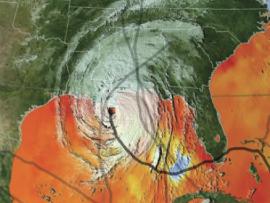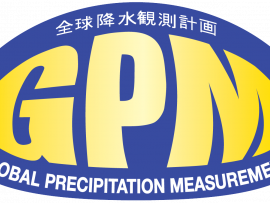Search
Primary tabs
Search
Your search for "Weather" gave back 165 results.
Primary Topic:
Subtopics:
Type:
Keywords:
Summary:
GPM Project Scientist Dr. Gail Skofronick-Jackson and Deputy Project Scientist Dr. George Huffman narrate a look at the new GPM IMERG global dataset.
Primary Topic:
Subtopics:
Type:
Keywords:
Summary:
In this activity, students are tasked with conducting an Earth systems analysis of Hurricane Katrina that will help answer the question "Is global warming causing an increase in hurricane frequency and intensity?"
Primary Topic:
Subtopics:
Type:
Keywords:
Summary:
The S'COOL Project involves students (ages 5 - 20+) in real science, making and reporting ground truth observations of clouds to assist in the validation of NASA's CERES satellite instruments. Includes lesson plans and other related materials.
Primary Topic:
Subtopics:
Type:
Standards:
Keywords:
Summary:
GPM Application Science Lead, Dr. Dalia Kirschbaum, discusses how GPM observes hurricanes from space, as well as the formation process and properties of these hurricanes.
Primary Topic:
Subtopics:
Type:
Standards:
Keywords:
Summary:
In this lesson, students will learn about hurricanes as a natural hazard. They will learn about technologies that have been developed to mitigate their devastating effects.
Primary Topic:
Subtopics:
Type:
Keywords:
Summary:
NASA and JAXA released the first images captured by their newest Earth-observing satellite, the Global Precipitation Measurement (GPM) Core Observatory, which launched into space Feb. 27, 2014.
Primary Topic:
Subtopics:
Type:
Keywords:
Summary:
Hurricane Irene's impact in New England shows that tropical cyclones can greatly affect regions outside the view of TRMM. The GPM mission will build upon TRMM's legacy by examining a larger swath of Earth with more sensitive instruments.
Primary Topic:
Subtopics:
Type:
Standards:
Keywords:
Summary:
'Towers in the Tempest' is a 4.5 minute narrated animation that explains recent scientific insights into how hurricanes intensify. This intensification can be caused by a phenomenon called a 'hot tower'.
Primary Topic:
Subtopics:
Type:
Standards:
Keywords:
Summary:
Hurricanes are the most awesome, violent storms on Earth. People call these storms by other names, such as typhoons or cyclones, depending on where they occur. Whatever they are called, tropical cyclones all form the same way.
Primary Topic:
Type:
Summary:
A list of frequently asked questions about precipitation.










